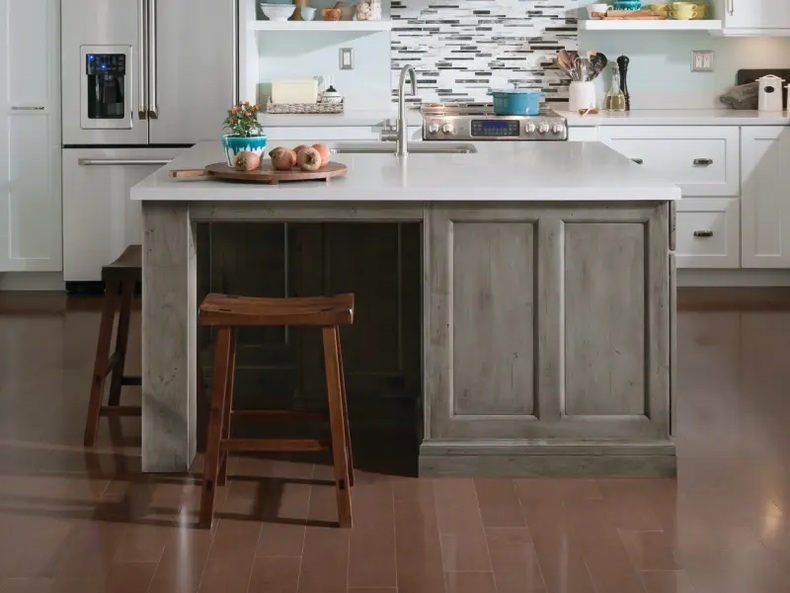Attain a Sophisticated Look Utilizing Ornate Legs For Kitchen Island Designs
Attain a Sophisticated Look Utilizing Ornate Legs For Kitchen Island Designs
Blog Article
Essential Factors to Take Into Consideration When Choosing Legs For Cooking Area Island
Choosing the appropriate legs for a kitchen area island includes a careful assessment of several elements that can dramatically influence both performance and aesthetic allure. As we discover these aspects, it comes to be clear that each choice can have far-ranging effects for the total kitchen experience.
Product Options
When picking legs for a cooking area island, comprehending the various material choices is vital for achieving both visual appeal and structural stability (Legs For Kitchen Island). The option of material significantly influences not just the resilience of the island yet likewise its general style and functionality
Wood is a preferred selection, using heat and adaptability. Strong woods, such as oak or maple, supply stamina and can be stained or repainted to match the cooking area style. Steel legs, often made from stainless-steel or wrought iron, add a commercial and contemporary feel while guaranteeing longevity and security. These products are immune to wear and can sustain substantial weight, making them excellent for larger islands.
Another option is engineered products, like MDF or plywood, which can be much more affordable while still supplying an array of finishes. However, they might not provide the very same degree of stability as solid wood or metal. Last but not least, materials such as acrylic or glass can create a contemporary look, though they might need additional assistance to guarantee security.
Ultimately, the option of product for kitchen island legs ought to line up with the wanted capability and the general theme of the kitchen.
Design And Style

When taking into consideration style, the shape and coating of the legs are important. Tapered legs can offer a feeling of lightness and sophistication, while thicker, more robust legs can convey toughness and stability. Furthermore, the surface-- be it repainted, stained, or natural-- need to enhance the kitchen cabinetry and kitchen counter products to create a unified appearance.
Moreover, the style of the legs can additionally mirror individual taste. Custom-made or decorative legs, such as those featuring elaborate carvings or distinct geometric forms, can offer as centerpieces, including character and personality to the cooking area. Inevitably, the ideal selection will certainly not just boost capability yet likewise elevate the visual charm, making the cooking area island a standout attribute of the home.
Elevation Considerations
Selecting the ideal elevation for kitchen island legs is crucial, as it directly impacts both functionality and convenience. The conventional height for a kitchen area island normally ranges from 36 to 42 inches, aligning with typical countertop heights.

It is additionally necessary to make up customers' preferences and elevations. Personalizing the height can make sure a comfy experience for all member of the family, making the kitchen island a much more enjoyable and useful room.
Weight Assistance
Making certain adequate weight support for cooking area island legs is vital for both security and functionality. The cooking area island often offers multiple objectives, consisting of cooking, dining, and extra storage, necessitating a durable assistance structure. When selecting legs, it is critical to take into consideration the general weight capacity needed based upon the island's planned use and the materials that will be put on it.
The selection of material for the legs plays a substantial duty in their weight-bearing capabilities. Strong timber, steel, and sturdy compounds typically offer remarkable strength contrasted to lighter materials. Additionally, the design of the legs-- whether they are directly, tapered, or have a pedestal type-- can affect their ability to disperse weight efficiently throughout the structure.
Furthermore, the leg placement need to be tactically planned to enhance stability. Legs placed at the corners or with a bigger base can better support heavier lots. Constantly consult the producer's specifications concerning tons limits to make sure that the legs can sustain the desired weight without compromising safety. In summary, selecting kitchen area island legs with adequate weight assistance is Discover More necessary for creating a safe and functional cooking space.
Setup and Maintenance
Correct installment and upkeep of cooking area island legs are crucial for ensuring durability and stability. This frequently entails protecting the legs to the island base using proper fasteners, ensuring that the legs are degree and you can try these out aligned.
As soon as set up, normal upkeep is needed to preserve the honesty and look of the legs - Legs For Kitchen Island. For wooden legs, regular cleaning with a moist cloth and application of appropriate wood gloss can protect against moisture damage and maintain their surface. Steel legs might need a mild cleansing option to get rid of grease and crud, complied with by a completely dry towel to stop corrosion formation
Additionally, examine the legs on a regular basis for signs of wear or damages, such as cracks or loosened joints. Tightening up screws or screws as required can additionally prolong the life expectancy of the legs. By sticking to these installment and upkeep practices, house owners can guarantee that their kitchen island continues to be strong and aesthetically appealing for years to come.
Final Thought

Visual comprehensibility is critical in selecting the design and design of legs for a cooking area island, as these aspects considerably influence the overall ambiance of the area. Tapered legs can supply a feeling of agility and elegance, while thicker, more robust legs can share toughness and stability.Choosing the proper elevation for cooking area island legs is important, as it directly influences both functionality and comfort. In summary, choosing cooking area island legs with sufficient weight support is vital for creating a functional and secure culinary space.
In final thought, selecting legs for a kitchen area island necessitates mindful factor to consider of various variables, consisting of material choices, design, elevation, weight support, and installation.
Report this page